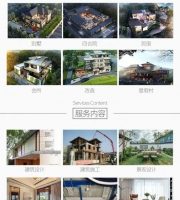The mortar joint of inclined top brick is not dense, and the specification of inclined top brick is too large.
Mortar king shall be used for plastering mortar instead of gypsum (hydrated lime).
The grade of structural concrete is above C30, and the concrete forms a concrete dense layer under the action of vibration, release agent and densifying agent.
The defects of inclined top brick are mainly in the following aspects: (1) the specification of inclined top brick is too large, resulting in too large mortar joint; (2) The angle of inclined top brick is greater than 60 or less than 45 degrees; (3) The brick mortar joint of inclined roof is not dense.
The concrete surface is not roughened or the roughening quality is poor.
Steel bar hanging brick, hole chiseling 11, plastering single layer thickness is too thick, plastering mortar single layer painting exceeds 1cm, because the initial setting time of mortar is long, the bonding force is very easy to be insufficient to offset the self weight at the initial stage of painting, resulting in sagging, cracking and hollowing.
A large area of blind false joint is very easy to roughly crack the plastering surface and penetrate the crack.
The organic grease has a long adhesion time and is difficult to eliminate, which is very easy to lead to plastering cracking and hollowing under the steel formwork system.
7.
Because the mortar King itself does not increase the strength, it is easy to lead to insufficient mortar strength and cracking.
1:1:6 mixed mortar ratio shall be adopted.
The pipeline trough is not blocked and directly painted with 10 large boxes.
3.
There are many causes of wall cracking due to image engineering quality and image.
The expansion settlement of masonry mortar on the wall of masonry broken brick is especially larger than that of other parts, which is easy to form multi skin through joints.
The surface layer is relatively smooth and the mortar surface is difficult to adhere.
Waste engine oil is used as the coating agent for formwork construction.
In summer, the finished surface of wall 14 without curing is slotted and pipe plastered, and then the secondary slotting repair is carried out.
The cement mortar is easy to bond loosely with the original wall and produce cracking.
In particular, waste engine oil is used as the release agent under the large steel formwork system.
Low content of building glue and insufficient coverage can easily lead to hollowing, sagging and cracking of plastering.
No net is hung at the junction, and the net is fixed with mortar.
2.
Your every message and every praise are the driving force for us to move forward! If the article is helpful to you, please forward it to your relatives and friends! Wall cracking is a common quality problem in construction engineering.
The defects of blind joint and false joint 5 masonry opening are as follows: (1) there is no overlapping treatment between window sill plate and window side wall; (2) The engagement length between the window sill plate and the window side wall is insufficient or dense; (3) The masonry opening is not provided with precast blocks, resulting in masonry damage.
13 the plastered surface is not cured in dry and high temperature seasons, and the high temperature in summer leads to rapid water evaporation.
The defects of secondary cracking and secondary hollowing after 15 hollowing repair on the plastering finished surface are mainly as follows: (1) the hollowing part is not cut and chiseled directly, resulting in hollowing around; (2) The chiseling surface and cutting section are not cleaned and watered; (3) The hollowing surface is not repaired twice; (4) After repair, it is not covered with film for curing before initial setting.
Construction defects of inclined top brick.
1:1 mortar and building glue are often used as the base course for roughening or spraying treatment.
The mesh hanging treatment on the interface between concrete and masonry is poor, and the mesh hanging defects are mainly reflected in the following aspects: (1) the mesh is not hung on the interface between masonry and structure; (2) Unreasonable fixing of masonry and structure hanging net; (3) There is height difference between masonry and structure; (4) The internal and external corners are fixed with galvanized steel wire mesh.
6.
1.
4.
The roughening coverage rate is high.
8.
This paper summarizes 15 common causes, and we should pay attention to prevention in construction to improve project quality.
12 mortar king shall be used for plastering mortar.
The water absorption at the broken part of masonry increases, resulting in rapid water loss of mortar at this part, resulting in cracking and hollowing.
There is no bite between the window sill plate and the window side wall, and the bite between the window sill plate and the masonry is not dense.
There is obvious cavity in the blind false joint of masonry, resulting in rapid water loss of mortar surface and hollowing.
If the grooving depth is less than 9, the pipeline groove will not be blocked and painted directly.
The difference in pipeline slotting fixation is mainly reflected in the following aspects: (1) slotting destroys the wall; (2) Insufficient slotting depth and sealing thickness; (3) Single line pipe is not fixed; (4) Multiple groups of conduits are fixed with “product”.
Because the rear grooving part will cause large damage to the completed secondary structure, and the disturbance during chiseling construction will cause a certain degree of damage to the stability of the wall, the repair and blocking measures must have the effect of structural reinforcement, otherwise it is easy to crack.
The plastered layer on the wall needs watering for maintenance to prevent cracking.
The cracking around the box is mainly reflected in the following aspects: (1) the masonry reinforcement hanging brick on the upper part of the box, and the masonry sinking leads to cracking; (2) The box opening is not reserved, and the masonry is excavated after completion, resulting in damage to the masonry or the mortar cannot be poured in; (3) The reserved opening of the box is too large, and the masonry is blocked at will; (4) There are blind joints and false joints in the masonry assembly at the back of the box.
this paper.




